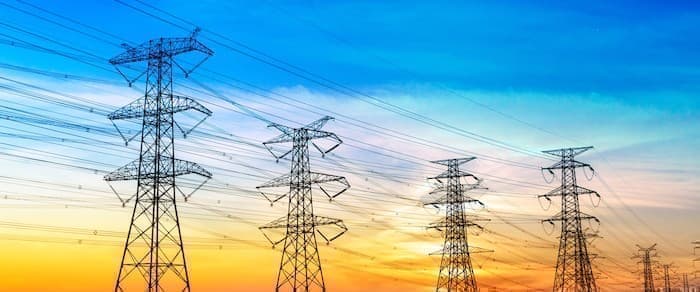Another electric utility transmission line has been implicated in a deadly California wildfire. Since mid-July, the Butte fire in Plumas County in the Sierra Nevadas has consumed over 130 square miles. According to utility officials, a large pine tree crashed into a transmission tower and ignited. At a news conference held in response to this recent crisis, in which the utility again appears responsible, the recently appointed CEO of San Francisco-based Pacific Gas and Electric, Patricia Poppe, proposed a bold program for burying about 10,000 miles of the utility’s transmission lines. The initial cost estimate for this program is $15 billion according to the utility’s COO, Adam Wright. Utility officials further stated that the full cost for this ambitious construction program could approach $30 billion. If we assume burying transmission lines costs between $1.5 to $3 million per mile, the higher figure applicable in more urban areas, then the magnitude of these numbers sound right. At present, the utility stated it is burying about 70 miles of transmission line per year. Although the COO affirmed a goal of burying 1,000 miles of wires per year in the future.
First a few simple observations. This is a large proposed capital program for a company of this size. Large but not necessarily unreasonable under the circumstances. Also, this seems to us like an engineering-driven solution to the difficult, pressing problem of hot transmission equipment versus a service territory filled with increasingly flammable trees and brush. Any engineered solution as many of our readers know is vulnerable to “gold plating” that is expensive overbuilding. Burying vast portions of an electric utility transmission system is not only expensive. It is much more costly to repair after it is installed and often more difficult to locate line breaks since they are no longer visible to the naked eye. But this would address the safety issue.
Are there reasonable alternatives to this vast transmission line burying program?
The first alternative, which is also expensive, is to dramatically increase tree and brush clearances around power lines. But the utility did not embrace or endorse this approach. Part of maintaining an extensive transmission network through heavily forested areas implies a hefty, annual financial commitment to tree trimming and brush clearance. Current problems suggest that inadequate sums were spent in the past and executives would just as soon avoid scrutiny in this area,
We believe a “one size fits all” approach, while appropriate perhaps in the garment industry, is less appropriate when applied to a utility’s transmission policy for a large, industrial region transitioning through a climate crisis.
The generation, transmission, and distribution components of a typical utility is a bit like a set of Legos with its various colored, interlocking plastic bricks. In our example, the distribution and (locally sourced) generation “pieces” fit together just fine without the transmission piece and create a fully functional system. (As an aside we should point out that advocates of small modular nuclear reactors see this technology as fulfilling this local energy production role.) Transmission, with its long-distance delivery function, is to us like the shipping or railroad industry. Container ships or railroad cars add no inherent value to the goods they carry. Instead, they move remotely produced products to market.
Related: Merger Mania Paves The Way For A New Era In U.S. Shale
The second alternative to extensive transmission burying is “islanding”. Equip communities of remote customers with solar and batteries for example such that their reliance on central station power and an increasingly fragile transmission network is reduced substantially. This can also make sense financially. Assume a rural area with only 10 utility customers per mile and a cost of $2 million per mile of line burying. That’s $200,000 per customer of potential capital expense. That amount would purchase a lot of solar panels and batteries.
Returning to the utility’s initial announcement, their COO Adam Wright likened a transmission capital program of this magnitude as being akin to the Marshall Plan where the US helped restore a physically and economically devastated Europe immediately after WW2. We think there’s a lot of truth in this analogy. The Marshall Plan taught Americans two things: help their Allies financially and most importantly not expect to be paid back. We believe the same may be true here.
This program may be helpful to a degree. It is sort of big and bold. But it does raise the question of whether sums of this magnitude could be spent better or differently. And this is where political leadership or the lack of it comes in.
A term from our history books, “sewer socialism” (not derogatory), connoted the provision of efficient municipal services like sewer, water, and transportation as essential for political candidates' electoral success. Governor Newsom of California is presently facing a recall election. One of the biggest electric companies in his state is in crisis. The state’s electric utilities were also in crisis the last time a California governor was recalled. California’s wildfires aren’t Governor Newsom’s fault any more than former Governor Grey Davis was responsible for Enron’s predatory behavior inflicted on California electricity consumers.
However, in both cases, popular anger stems from a feeling that the provision of basic, affordable utility services are ultimately the responsibility of the government to superintend. And that’s what is missing here. No one expects Mr Newsom to single-handedly eliminate wildfires and the climate crisis. But this is a case where failures in the private sector are impinging and destabilizing the public sphere. We believe that avoidance of this thorny issue will only further imperil the governor’s political future.
By Leonard Hyman and Bill Tilles for Oilprice.com
More Top Reads From Oilprice.com:
- Shell Reports $5.5 Billion Net Profit And Hikes Dividends
- Analysts See Oil Trading Closer To $70 Through Year-End
- Why Norway Won’t Give Up On Oil & Gas



















Oh, nooooo!